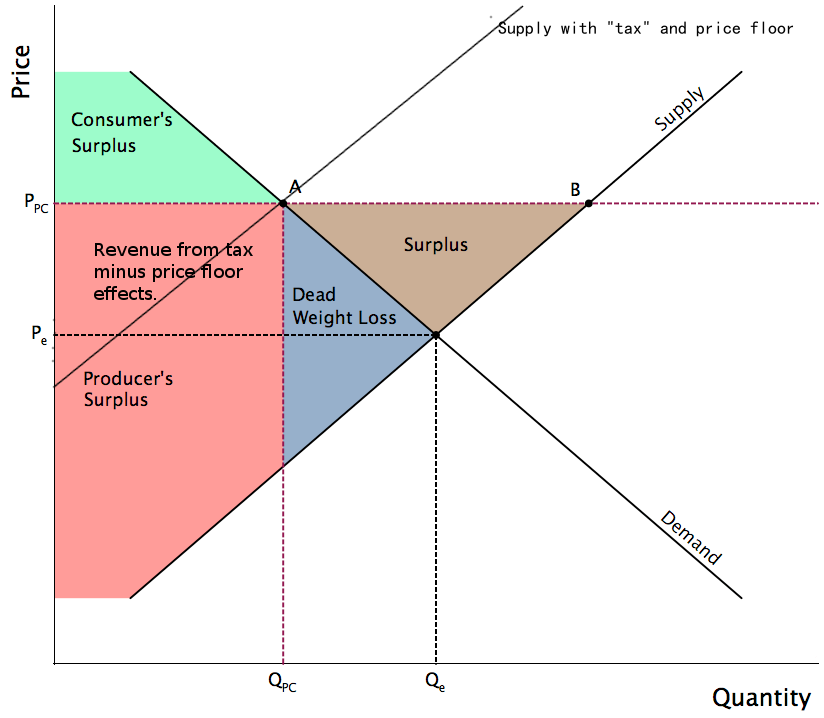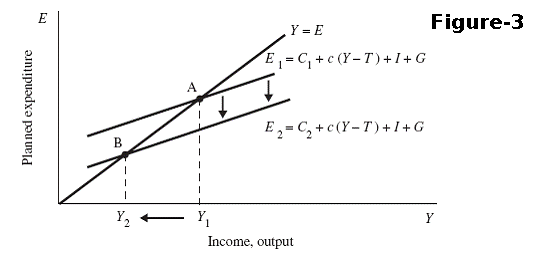This is a quick analysis I did over the economy (or lack thereof) of Onigiri. I have a BA in Economics w/ International Trade and my nerd instincts kicked in and this is what came out.
Basic Supply/Demand
Minimum Prices - In economics, we call the the Price Floor. Essentially, this artificially raises the prices from their natural market level to the minimum price. This causes Q (quantity) to decrease to Qpc, meaning less gear, items, etc being “produced,” or farmed/sold.
Tax - As of now, each sale comes with a 30% tax. (why you get less than the minimum price.) This has the same effect as a price floor, further adding to a decrease in Qe to Qpc. In the real world the tax money is suppose to go back into the economy. However in Onigiri, the money simply vanishes. This is to take money out of the Onigiri economy and force people to buy more OC with IRL currency. (USD, yen, etc) The “tax” (monetary contraction) combined with the dead weight loss dramatically reduces the quantity of items being sold and “produced.”

Planned Expenditure
E=Planned expenditure
C=Consumption
c=MPC (Marginal Propensity to Consume) * (Income - Tax)
I=Investment
G=Government Spending

With c, (MPC), as stated before, there is a large “tax,” resulting into a lower MPC. “I” will also decrease due to a more in depth analysis i won’t go in to. Briefly, “I” can be thought of “investing” in the items you own and the ability to farm (produce.) You’re more likely to “invest” or improve your gear if you know you can easily sell it later for a decent price. You’re also more likely to “invest” if you know it will improve your “production,” or items from grinding. Since you can’t efficiently sell the items you get, then investment goes down. G is non-existent. Onigiri doesn’t spend the “tax” back into the economy.
TLDR: mpc and “I” go down, resulting in a lower planned expenditure. This causes lower income (your ryou, items, etc) and output (less items for sell.)
*Something to think about: income=output=GDP. GDP is used to determine how well an economy is in the real world. The analysis above indicates much lower GDP with the minimum price and “tax” in place.
Liquidity Theory of Money
MV=PY
P=price level
Y=output/income
M=money
V=velocity
With the lack of trading, V will decrease. V is velocity, or the amount of times a currency is traded. As seen before, Output/income (Y) decreases. Price (P) increases with these effects in place. So what?; This shows artificial inflation (Higher prices than a natural market!!!)
TLDR: WTF Does All of This Mean?!
This means less items are being traded/sold with a “minimum” price, a “tax” (without a return to the economy) and the lack of a trade feature. Prices are artificially high. A large amount (30% of sales) are being extracted from the economy (opposed to a real tax where it is theoretically suppose to re-enter.) This is done to force people to buy more OC, however, without these features and decreased cash shop prices, the sales of OC would increase and most likely INCREASE Cybersteps profits. However, this is another analysis entirely requiring data I don’t have access to. (their finance data)
Your Response!
Let me know what you think! If I messed up or you think I’m wrong, please state why rather than “this is stupid.”
Thanks!


